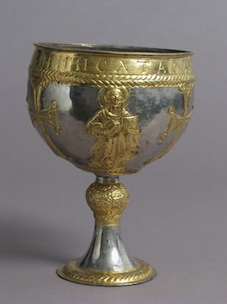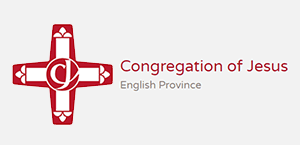Gospel in Art: Can you drink the cup that I am going to drink?

The Attarouthi Treasure, Chalice, 500-650, Syria © Metropolitan Museum, New York
Source: Christian Art
Gospel of 25 July 2023
Matthew 20:20-28
The mother of the sons of Zebedee came to Jesus with her sons to make a request of him, and bowed low; and he said to her, 'What is it you want?' She said to him, 'Promise that these two sons of mine may sit one at your right hand and the other at your left in your kingdom.' 'You do not know what you are asking' Jesus answered. 'Can you drink the cup that I am going to drink?' They replied, 'We can.' 'Very well,' he said 'you shall drink my cup, but as for seats at my right hand and my left, these are not mine to grant; they belong to those to whom they have been allotted by my Father.'
When the other ten heard this they were indignant with the two brothers. But Jesus called them to him and said, 'You know that among the pagans the rulers lord it over them, and their great men make their authority felt. This is not to happen among you. No; anyone who wants to be great among you must be your servant, and anyone who wants to be first among you must be your slave, just as the Son of Man came not to be served but to serve, and to give his life as a ransom for many.'
Reflection on the silver chalice
Jesus asks in today's reading 'Can you drink the cup that I am going to drink?' This is of course a direct reference to his sacrificial offering which we commemorate during the eucharist, through the use of a chalice. Using a chalice to hold the sacramental wine dates back to early Christianity. The model was derived from the Ancient Roman calix model, which was a drinking vessel consisting of a bowl fixed atop a stand, and was in common use at banquets.
Early chalices usually consisted of a much larger bowl than is the case nowadays. Our 6th-century example demonstrates this well. Over time, the size of the bowl diminished and the base became larger for better stability. Having a smaller bowl also tended to convey that what the small (often tulip-shaped) cup held was highly precious. Chalices will often have a pommel or node where the stem meets the cup to make the elevation easier. The chalice is simply the most sacred vessel in Christian liturgical worship.
The General Instruction of the Roman Missal prepared by the Liturgy Office of the Catholic Bishops' Conference of England and Wales states:
327. Among the requisites for the celebration of Mass, the sacred vessels are held in special honour, and among these especially the chalice and paten, in which the bread and wine are offered and consecrated and from which they are consumed.
328. Sacred vessels should be made from precious metal. If they are made from metal that rusts or from a metal less precious than gold, they should generally be gilded on the inside.
329. According to the judgement of the Conference of Bishops, its decisions having received the recognitio of the Apostolic See, sacred vessels may also be made from other solid materials which in the common estimation in each region are considered precious or noble, for example, ebony or other harder woods, provided that such materials are suitable for sacred use. In this case, preference is always to be given to materials that do not easily break or deteriorate. This applies to all vessels that are intended to hold the hosts, such as the paten, the ciborium, the pyx, the monstrance, and others of this kind.
330. As regards chalices and other vessels that are intended to serve as receptacles for the Blood of the Lord, they are to have a bowl of material that does not absorb liquids. The base, on the other hand, may be made of other solid and worthy materials.
Etc…
I am sharing with you these references from the Roman missal, as they make interesting reading. Our Byzantine chalice features a figure carrying a Gospel book and swinging a censer. This is probably Saint Stephen. He is one of the first seven deacons of the Christian church and its first martyr (Acts of the Apostles 6 and 7). He was a popular saint throughout the Christian world in this period, especially in Syria where this chalice was made.
LINKS
Gospel in Art: https://christian.art/
Today's reflection: https://christian.art/daily-gospel-reading/matthew-20-20-28-2023/


















